
Exploring Latinerkvarteret: Aarhus' Historic Gem
Discover Latinerkvarteret in Aarhus: A perfect blend of historic charm, vibrant culture, and modern amenities in one of Denmark's oldest neighborhoods.
Latinerkvarteret, also known as the Latin Quarter, is one of Aarhus' oldest and most charming neighborhoods. Nestled in the heart of Denmark's second-largest city, this historic area is renowned for its narrow cobbled streets, picturesque buildings, and vibrant cultural scene. As you wander through the Latin Quarter, you will be greeted by an array of boutique shops, cozy cafés, and trendy restaurants, all housed in beautifully preserved medieval architecture. The neighborhood's atmosphere is both lively and relaxed, making it an ideal destination for those seeking a blend of history, culture, and modern-day amenities. Art enthusiasts will find themselves at home with numerous galleries showcasing contemporary Danish art, while history buffs can explore the area's rich past through its well-preserved structures and informative plaques. The Latin Quarter is also home to Aarhus Cathedral, the longest and tallest church in Denmark, which stands as a testament to the city's historical and architectural significance. For those who appreciate a good meal, the Latin Quarter offers a diverse culinary scene that caters to all tastes and budgets. From traditional Danish fare to international cuisine, there's something for everyone. And after a day of exploring, visitors can unwind at one of the many cozy bars or enjoy a live music performance at a local venue. With its unique blend of old-world charm and contemporary flair, Latinerkvarteret is a must-visit destination for anyone traveling to Aarhus.
Local tips in Latinerkvarteret
- Visit early in the morning to enjoy the quiet streets and grab a coffee from a local café.
- Don't miss the Aarhus Cathedral; its stunning architecture and history are worth the visit.
- Take time to explore the small boutique shops for unique souvenirs and local crafts.
- Wear comfortable shoes as the cobblestone streets can be uneven.
- Check out the local event listings for live music and cultural performances.
Exploring Latinerkvarteret: Aarhus' Historic Gem
Latinerkvarteret, also known as the Latin Quarter, is one of Aarhus' oldest and most charming neighborhoods. Nestled in the heart of Denmark's second-largest city, this historic area is renowned for its narrow cobbled streets, picturesque buildings, and vibrant cultural scene. As you wander through the Latin Quarter, you will be greeted by an array of boutique shops, cozy cafés, and trendy restaurants, all housed in beautifully preserved medieval architecture. The neighborhood's atmosphere is both lively and relaxed, making it an ideal destination for those seeking a blend of history, culture, and modern-day amenities. Art enthusiasts will find themselves at home with numerous galleries showcasing contemporary Danish art, while history buffs can explore the area's rich past through its well-preserved structures and informative plaques. The Latin Quarter is also home to Aarhus Cathedral, the longest and tallest church in Denmark, which stands as a testament to the city's historical and architectural significance. For those who appreciate a good meal, the Latin Quarter offers a diverse culinary scene that caters to all tastes and budgets. From traditional Danish fare to international cuisine, there's something for everyone. And after a day of exploring, visitors can unwind at one of the many cozy bars or enjoy a live music performance at a local venue. With its unique blend of old-world charm and contemporary flair, Latinerkvarteret is a must-visit destination for anyone traveling to Aarhus.
Iconic landmarks you can’t miss
The Old Town
Explore centuries of Danish urban life at Den Gamle By in Aarhus, where meticulously restored buildings, lively activities, and costumed guides bring history to life.
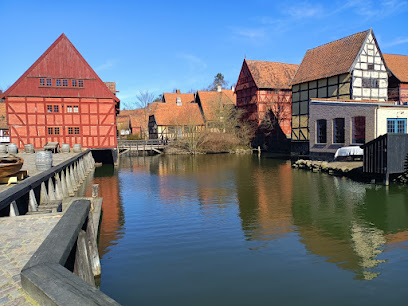
Aarhus Cathedral
Soaring Gothic cathedral in the center of Aarhus, famed for its medieval frescoes, towering spire, and centuries of Danish history.
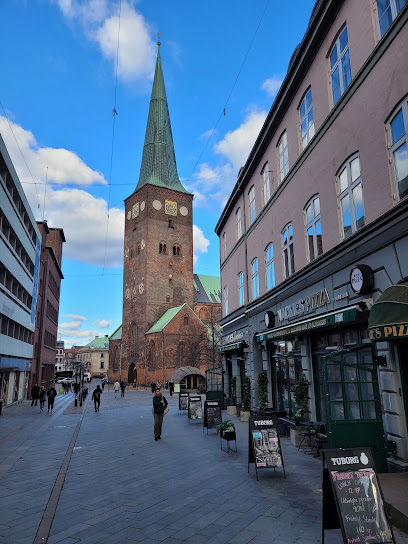
Klostertorvet
Klostertorvet, the lively square of Aarhus’ Latin Quarter, blends medieval history, vibrant café life, and creative energy in a beloved urban hub.
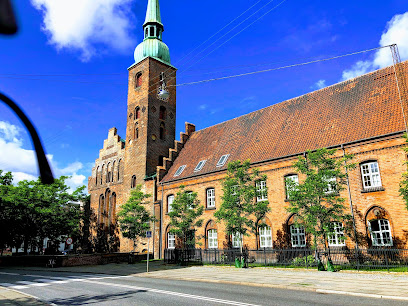
Herman Sallings Plads
A vibrant urban square bridging historic Aarhus and the harbor, ideal for city strolls, open-air events, and admiring modern Danish city life.
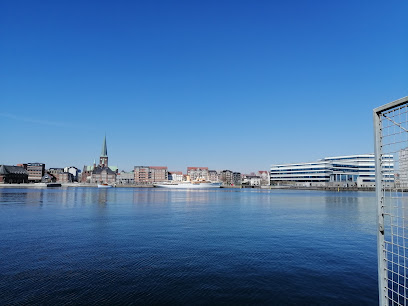
Store Torv
Aarhus’ central square, Store Torv, offers a blend of medieval history, architectural grandeur, and lively city life at the doorstep of the majestic cathedral.
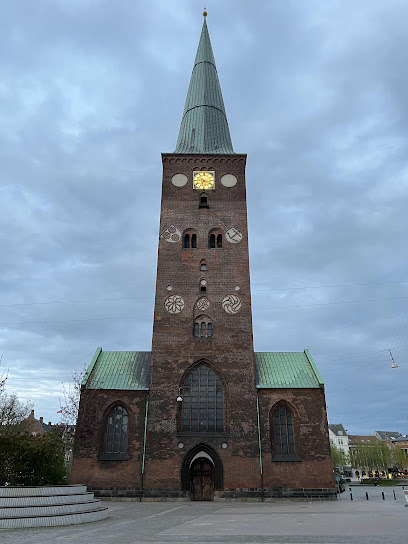
Lille Torv
Charming historic square at the crossroads of old and new Aarhus, where cafe life, local events, and centuries of history meet in the Latinerkvarteret.
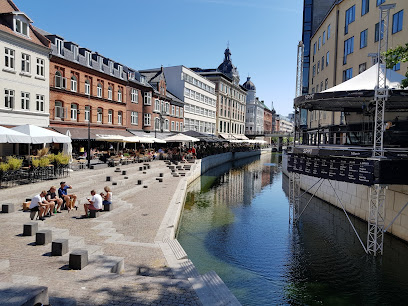
Vadestedet
Buzzing riverside promenade in Aarhus with vibrant cafés, historic charm, and modern city life—the perfect spot to unwind by the water and soak up urban atmosphere.
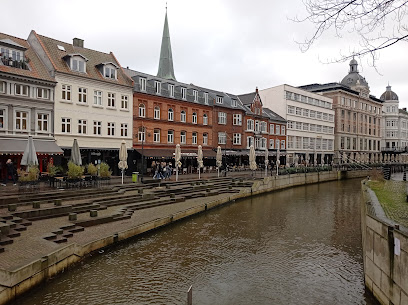
Latin Quarter
Wander Aarhus’ Latin Quarter—where medieval streets, colorful façades, and innovative shops create the city’s most vibrant and historic district.
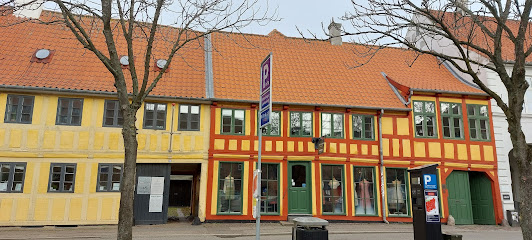
Essential places to dine
Teater Bodega
Classic Danish inn in central Aarhus, offering authentic smørrebrød, cosy ambiance, and a historic link to the city’s arts and theatre scene.
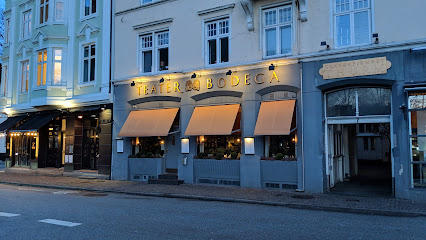
Mefisto Restaurant & Gårdhave
Aarhus’ beloved seafood restaurant and garden, Mefisto, offers Scandinavian classics, atmospheric courtyard dining, and vibrant local flavor in the city’s oldest quarter.
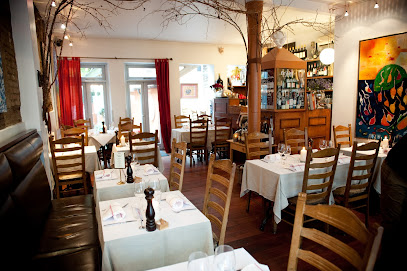
Den Rustikke
Den Rustikke delivers generous Danish classics and modern comfort fare in Aarhus’ creative Latin Quarter, renowned for its lively ambience and sidewalk dining.
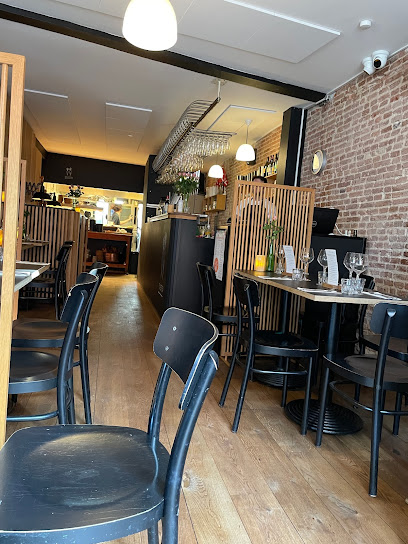
Restaurant Komfur
Restaurant Komfur in Aarhus offers modern Danish cuisine in a stylish yet comforting space, celebrated for creative menus, vibrant atmosphere, and local culinary flair.

Slap Af
Atmospheric restaurant and cocktail hotspot in the Latinerkvarteret, Slap Af entices with Nordic-inspired menus, creative drinks, and a lively crowd in historic Aarhus.

Langhoff & Juul
Nordic-inspired, organic dining in Aarhus’ historic Latin Quarter, with a focus on sustainability, seasonal menus, atmospheric interiors, and local flair.

Sct. Oluf Restaurant
A vibrant French-inspired bistro offering creative cuisine and Danish hospitality in the artistic heart of Latinerkvarteret, Aarhus’ oldest and most atmospheric quarter.
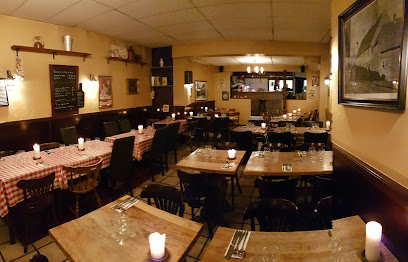
Restaurant Domestic
Discover culinary artistry at Restaurant Domestic in Aarhus – where local ingredients meet innovative Nordic cuisine.
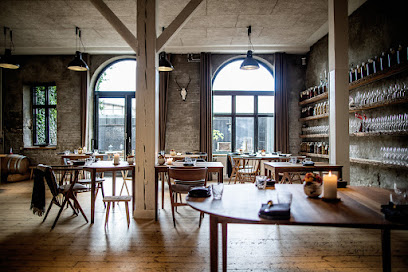
L'estragon
L’estragon serves up refined French cuisine with Danish creativity in Aarhus’ Latin Quarter, offering intimate ambiance, seasonal tasting menus, and top-tier wine pairing.
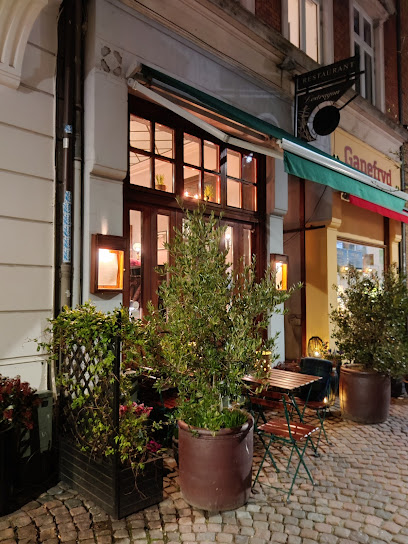
Pihlkjær Restaurant
Acclaimed for innovative Danish cuisine, Pihlkjær Restaurant marries local flavors, sustainability, and relaxed elegance in Aarhus’ charismatic Latinerkvarteret.
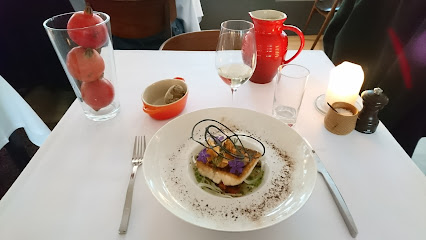
Markets, malls and hidden boutiques
Magpie Lane Vintage
Aarhus’ go-to vintage boutique for unique, handpicked fashion finds and classic accessories in an inviting, sustainability-focused setting.
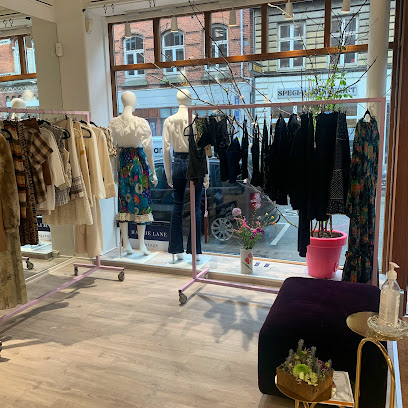
& Vintage
A boutique in Aarhus' Latin Quarter offering hand-picked vintage treasures, Scandinavian gifts, artisan wares, and a warm, local shopping experience in a creative setting.
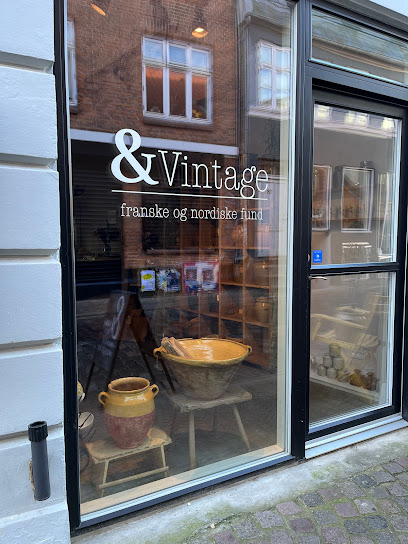
Jooma Aarhus
Discover unique Danish crafts and gifts at Jooma Aarhus, nestled in the historic Latinerkvarteret.

Local Phrases
-
- HelloHej
[hey] - GoodbyeFarvel
[far-vel] - YesJa
[ya] - NoNej
[nay] - Please/You're welcomeVær så god
[ver so good] - Thank youTak
[tak] - Excuse me/SorryUndskyld
[oond-skool] - How are you?Hvordan har du det?
[vor-dan har doo deh] - Fine. And you?Fint. Og du?
[feent oh doo] - Do you speak English?Taler du engelsk?
[tah-ler doo eng-elsk] - I don't understandJeg forstår ikke
[yay for-stor ee-keh]
- HelloHej
-
- I'd like to see the menu, pleaseJeg vil gerne se menuen, tak
[yay veel gehr-neh say meh-noo-en, tak] - I don't eat meatJeg spiser ikke kød
[yay spee-ser ee-keh kuhd] - Cheers!Skål!
[skol] - I would like to pay, pleaseJeg vil gerne betale, tak
[yay veel gehr-neh beh-tah-leh, tak]
- I'd like to see the menu, pleaseJeg vil gerne se menuen, tak
-
- Help!Hjælp!
[hyelp] - Go away!Gå væk!
[goh vek] - Call the Police!Ring til politiet!
[ring teel po-lee-tee-et] - Call a doctor!Ring efter en læge!
[ring ef-ter en leh-eh] - I'm lostJeg er blevet væk
[yay air bleh-vet vek] - I'm illJeg er syg
[yay air soog]
- Help!Hjælp!
-
- I'd like to buy...Jeg vil gerne købe...
[yay veel gehr-neh ker-buh] - I'm just lookingJeg kigger bare
[yay kee-ger bah-reh] - How much is it?Hvor meget koster det?
[vor meh-eh koh-ster deh] - That's too expensiveDet er for dyrt
[deh a for deert] - Can you lower the price?Kan du sænke prisen?
[kan doo sen-keh pree-sen]
- I'd like to buy...Jeg vil gerne købe...
-
- What time is it?Hvad er klokken?
[vahd air kloh-ken] - It's one o'clockKlokken er et
[kloh-ken air eht] - Half past (10)Halv ti
[hahlv tee] - MorningMorgen
[mor-gen] - AfternoonEftermiddag
[eh-ter-mee-dahg] - EveningAften
[af-ten] - YesterdayI går
[ee gohr] - TodayI dag
[ee dah] - TomorrowI morgen
[ee mor-gen] - 1En
[en] - 2To
[toh] - 3Tre
[treh] - 4Fire
[fee-reh] - 5Fem
[fem] - 6Seks
[seks] - 7Syv
[soov] - 8Otto
[oh-toh] - 9Ni
[nee] - 10Ti
[tee]
- What time is it?Hvad er klokken?
-
- Where's a/the...?Hvor er en/den...?
[vor air en/dehn] - What's the address?Hvad er adressen?
[vahd air ah-dres-en] - Can you show me (on the map)?Kan du vise mig (på kortet)?
[kan doo vee-seh meeh (poh kohr-teh)] - When's the next (bus)?Hvornår er næste (bus)?
[vor-nahr air nes-teh (boos)] - A ticket (to ....)En billet (til ....)
[en bee-let (teel)]
- Where's a/the...?Hvor er en/den...?
History of Latinerkvarteret
-
Latinerkvarteret, or the Latin Quarter, is one of the oldest neighbourhoods in Aarhus, with roots tracing back to the medieval period. Established in the late 12th century, it was named after the Latin school that operated here, indicating its role as a centre of education and culture. The cobbled streets and narrow alleys reflect the medieval urban layout, making it a fascinating area to explore for those interested in early Danish history.
-
During the Renaissance period, Latinerkvarteret emerged as a vibrant cultural hub. The area became associated with artists, scholars, and merchants, contributing to the intellectual and artistic development of Aarhus. The presence of the Latin school attracted numerous students and intellectuals, fostering an environment rich in innovation and creativity. This era saw the construction of several significant buildings, many of which still stand today.
-
The 19th century brought significant changes to Latinerkvarteret as Aarhus industrialized. The development of the harbour and the railway network positioned Aarhus as a key trading port, leading to an influx of people and a shift in the neighbourhood's character. While Latinerkvarteret retained its historical charm, it also adapted to the needs of a growing population, resulting in a blend of old and new architectural styles.
-
In the late 20th century, Latinerkvarteret faced challenges due to urban development pressures. However, efforts were made to preserve its unique character and historical significance. Restoration projects revitalized the area, ensuring that its medieval and Renaissance heritage was maintained. Today, the neighbourhood is a popular destination for both locals and tourists, featuring quaint shops, cafes, and cultural institutions that celebrate Aarhus's rich history.
-
Latinerkvarteret hosts various cultural events and festivals throughout the year, reflecting its vibrant community spirit. Events like the Aarhus Festival and local markets showcase the neighbourhood's artistic heritage and culinary offerings. These gatherings not only celebrate the traditions of Aarhus but also foster a sense of belonging among residents and visitors alike, highlighting Latinerkvarteret's role as a cultural beacon in the city.
Latinerkvarteret Essentials
-
Latinerkvarteret is centrally located in Aarhus, making it easily accessible from other neighborhoods. The nearest railway station is Aarhus Hovedbanegård, which is about a 15-minute walk away. From the station, you can take bus lines 1, 3, or 11 directly to the vicinity of Latinerkvarteret. Additionally, taxis and rideshare services are readily available throughout the city, providing a convenient option for reaching this charming neighborhood.
-
Latinerkvarteret is a pedestrian-friendly area, and many of its attractions can be explored on foot. Bicycles are a popular mode of transport in Aarhus; you can rent one from various bike-sharing services available throughout the city. Public transport is efficient, with buses frequently connecting Latinerkvarteret to other parts of Aarhus. For a unique experience, consider renting an electric scooter, which can be found in numerous locations around the neighborhood.
-
Latinerkvarteret is generally safe for tourists, but standard precautions should still be observed. While violent crime is rare, petty theft can occur, especially in crowded areas. It is advisable to avoid poorly lit streets at night and to keep personal belongings secure. Specific areas to be cautious of include alleyways after dark. Being aware of your surroundings will enhance your safety during your visit.
-
In case of an emergency, dial 112 for immediate assistance. This number connects you to local emergency services, including police, fire, and medical assistance. There are several hospitals and clinics in Aarhus, with the closest being Aarhus University Hospital. It’s advisable to have travel insurance that covers emergencies, and for non-urgent medical needs, local pharmacies are equipped to assist.
-
Fashion: Do dress casually but neatly; Danish people appreciate a well-put-together appearance. Don’t wear overly revealing clothing, especially in religious sites. Religion: Do respect local customs; it's polite to be quiet and respectful in places of worship. Public Transport: Do be punctual and give up your seat to those in need. Don’t talk loudly or eat on public transport. Greetings: Do greet locals with a friendly smile and a 'Hej' (Hello). Don’t forget to say 'Tak' (Thank you) when receiving help or service. Eating & Drinking: Do try local specialties like smørrebrød. Don’t waste food; it's considered disrespectful to leave food uneaten.
-
To experience Latinerkvarteret like a local, explore the small boutiques and art galleries tucked away in the narrow streets. Visit the local cafes for a cozy atmosphere and enjoy a traditional Danish pastry with your coffee. Engage with locals, as they are often friendly and eager to share recommendations. Attend local events or markets if available, as they provide a glimpse into the community's culture. Don’t miss out on the street art that adorns many buildings, often reflecting the neighborhood's creative spirit.
Nearby Cities to Latinerkvarteret
-
Things To Do in Randers
-
Things To Do in Horsens
-
Things To Do in Silkeborg
-
Things To Do in Viborg
-
Things To Do in Vejle
-
Things To Do in Kalundborg
-
Things To Do in Herning
-
Things To Do in Odense
-
Things To Do in Kolding
-
Things To Do in Nyborg
-
Things To Do in Aalborg
-
Things To Do in Slagelse
-
Things To Do in Ribe
-
Things To Do in Roskilde
-
Things To Do in Hillerød










